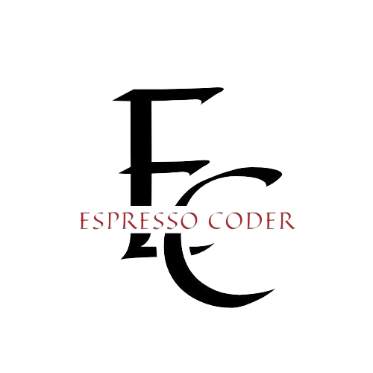Picture this: you walk into your doctor’s office and immediately notice the exhausted look in their eyes. They’re drowning in paperwork while you sit there waiting. Sound familiar? Healthcare workers today spend more time staring at computer screens typing notes than actually looking at patients. It’s a mess that’s driving talented doctors and nurses straight into burnout territory.
Your medical facility probably still relies on those clunky, outdated documentation methods that eat uptime like nobody’s business. But here’s the thing – revolutionary technology has finally arrived that can transform how you capture, store, and access medical information. And honestly? It might just save healthcare’s soul by bringing the human connection back where it belongs.
Contents
- Transforming Healthcare Documentation with Revolutionary Technology
- Strategic Framework for Healthcare Technology Adoption
- Advanced Applications for Medical Records Management
- Quantifiable Outcomes and Measurable Benefits
- Overcoming Implementation Challenges
- Emerging Technologies and Future Developments
- Regulatory Compliance and Quality Assurance
- Measuring Success and Performance Tracking
- Vendor Selection and Partnership Strategies
- Common Questions About Healthcare Documentation Technology
Transforming Healthcare Documentation with Revolutionary Technology
Here’s where things get interesting. The healthcare industry is sitting right at this fascinating crossroads where old-school documentation crashes headfirst into cutting-edge innovation. And the numbers? They’re absolutely staggering.
Recent projections show that AI adoption is projected to generate significant cost savings for healthcare systems, with estimates reaching up to USD 150 billion by 2026. That’s not pocket change we’re talking about here. This massive figure screams one thing: you desperately need smarter approaches to managing medical records.
When you start leveraging AI clinical documentation, something magical happens. Your healthcare facility discovers improvements in efficiency and accuracy that you probably never thought possible. These aren’t just fancy digitized versions of your current headaches – they completely flip the script on how medical information moves through your organization.
Think about it this way: you’re not just upgrading from paper chaos to digital order. You’re making a fundamental leap toward actually putting patients back at the center of everything you do.
Core Components of Advanced Documentation Systems
What makes modern AI in healthcare tick? It’s all about those sophisticated machine learning algorithms that actually understand medical jargon and context. Pretty cool, right? These systems get smarter by learning from your existing records, picking up on patterns in clinical language, and automatically suggesting information that makes sense.
But here’s where it gets really impressive: natural language processing lets your doctors talk naturally while the system translates everything into structured, searchable data. No more fighting with clunky interfaces or spending forever hunting down the right dropdown menu.
Real-time data capture eliminates that awful lag between seeing patients and getting their records updated. Instead of your staff burning the midnight oil updating records after long shifts, they can wrap up documentation during or right after patient visits. Game changer.
Strategic Framework for Healthcare Technology Adoption
Healthcare technology adoption isn’t something you can just wing. You need careful planning and systematic implementation to maximize benefits while keeping disruption to a minimum. Before diving into any major technological transition, you’ve got to evaluate your current capabilities, figure out if your staff is ready, and assess your infrastructure requirements.
Organizational Readiness Assessment
Your infrastructure evaluation means taking a hard look at existing network capabilities, security protocols, and how well new systems might play with your current setup. Staff competency analysis helps you identify training needs and spot those potential champions who can rally support for adoption efforts. Budget allocation? That requires realistic projections of implementation costs, ongoing maintenance expenses, and honest timelines for seeing return on investment.
Implementation Roadmap Development
Successful technology adoption follows a structured timeline that starts with pilot programs lasting three to six months. These initial tests let you identify potential challenges and fine-tune processes before rolling things out more broadly. Department-specific rollouts typically need six to twelve months, focusing on areas where technology can deliver immediate wins.
Full-scale organizational deployment spans twelve to eighteen months, ensuring comprehensive integration across all your departments and workflows. This phased approach reduces risk while building internal expertise and confidence throughout your organization.
Advanced Applications for Medical Records Management
Modern documentation systems go way beyond simple data entry. They incorporate intelligent features that actively support your clinical decision-making and administrative efficiency.
Automated Clinical Documentation Features
Voice-to-text transcription with medical terminology recognition lets your clinicians dictate notes naturally while ensuring accuracy. These systems understand medical context, automatically formatting information according to established standards and regulatory requirements. Automated clinical coding integration streamlines your billing processes, reducing errors and speeding up reimbursement cycles.
Intelligent Data Processing Capabilities
Smart healthcare records use pattern recognition to compile comprehensive patient histories automatically. These systems identify relevant information from multiple sources, creating cohesive patient narratives that support informed decision-making. Risk factor identification through historical data analysis helps your clinicians recognize potential health concerns before they become critical issues.
Predictive analytics capabilities support preventive care recommendations, identifying patients who might benefit from specific interventions based on their medical history and current health indicators.
Quantifiable Outcomes and Measurable Benefits
Benefits of AI in medical records extend far beyond operational improvements to deliver tangible results that impact both patient care and your organization’s sustainability.
Operational Efficiency Improvements
Healthcare providers typically experience 40% reductions in documentation time, freeing up more focus for direct patient care. Transcription error rates decrease by approximately 75%, improving record accuracy and reducing potential liability concerns. Real-time compliance monitoring ensures your documentation meets regulatory standards without requiring extensive manual review processes.
Patient Care Enhancement Metrics
Improved diagnostic accuracy rates result from better information accessibility and comprehensive patient histories. Faster treatment initiation becomes possible when relevant medical information is immediately available to all your care team members. Enhanced care coordination across specialties improves patient outcomes while reducing redundant tests and procedures.
These improvements create measurable value for your patients through better health outcomes and more positive care experiences.
Overcoming Implementation Challenges
Real-world deployment of advanced healthcare documentation systems involves addressing data security concerns, system integration complexities, and staff adaptation requirements.
Data Security and Privacy Protection
HIPAA-compliant system design ensures patient information remains secure throughout all processing and storage activities. End-to-end encryption protocols protect data during transmission between systems and storage locations. Comprehensive audit trail maintenance provides complete visibility into who accessed patient information and when.
Legacy System Integration Solutions
API-based connectivity options allow new documentation systems to communicate effectively with your existing healthcare technology infrastructure. Data migration strategies ensure historical patient information transfers accurately without loss or corruption. Hybrid deployment models support gradual transitions, allowing your organization to maintain operations while implementing new capabilities.
Successful integration requires careful planning and testing to ensure seamless workflow continuation throughout your transition period.
Emerging Technologies and Future Developments
Next-generation features currently in development will further expand the capabilities and applications of intelligent healthcare documentation systems.
Next-Generation Features in Development
Multimodal processing capabilities will integrate image and text analysis, allowing systems to extract information from medical imaging, photographs, and handwritten notes. Federated learning approaches enable system improvement while maintaining patient privacy through distributed training methods. Quantum computing applications promise to revolutionize healthcare data processing speeds and analytical capabilities.
Integration with Connected Devices
Real-time patient monitoring data from IoT devices and wearable technology will automatically populate healthcare records with continuous health metrics. Remote patient monitoring capabilities will document patient status between clinic visits, providing comprehensive health pictures. Continuous data streaming will support proactive care interventions based on real-time health indicator changes.
Regulatory Compliance and Quality Assurance
Meeting healthcare documentation standards requires careful attention to regulatory requirements and quality control mechanisms throughout system operation.
Healthcare Documentation Standards
Joint Commission requirements for documentation completeness and accuracy must be built into system design from day one. CMS compliance for reimbursement and reporting ensures financial sustainability while meeting regulatory obligations. State-specific regulations vary by location, requiring flexible systems that adapt to local requirements.
These standards provide the framework within which all your healthcare documentation technology must operate.
Quality Control Mechanisms
Validation protocols ensure system outputs meet clinical and regulatory standards before finalizing patient records. Human oversight workflows maintain clinical judgment in all documentation processes while leveraging technological efficiency. Continuous improvement through feedback loops allows systems to evolve and improve based on user experience and outcome data.
Measuring Success and Performance Tracking
Clear metrics and performance indicators help you evaluate the effectiveness of your healthcare documentation technology investments.
Clinical Quality Indicators
Documentation completeness scores track how thoroughly patient encounters are recorded and whether all required elements are captured. Clinical decision support utilization rates measure how effectively the system supports care decisions. Patient safety incident reduction metrics demonstrate the impact on overall care quality and risk management.
Operational Performance Tracking
System uptime and reliability statistics ensure technology supports rather than hinders your clinical workflows. User satisfaction and adoption rates indicate staff acceptance and effective change management. Return on investment calculations demonstrate financial benefits and support continued technology investment decisions.
Vendor Selection and Partnership Strategies
Choosing the right technology provider requires careful evaluation of capabilities, support offerings, and long-term partnership potential.
Evaluating Healthcare Record Providers
Technical capability assessment examines system features, integration options, and scalability potential. Support and maintenance service levels determine the ongoing partnership experience and problem resolution capabilities. Long-term technology roadmap alignment ensures your chosen partner will continue meeting evolving organizational needs.
Building Strategic Technology Partnerships
Collaborative development opportunities allow your organization to influence product evolution based on specific needs and experiences. Shared risk and reward models create mutual investment in successful outcomes. These partnerships support continued innovation and improvement in healthcare documentation technology.
Common Questions About Healthcare Documentation Technology
What are three ways AI will change healthcare by 2030?
Over the next five years, AI agents will greatly impact healthcare in three ways: Integration: Unifying legacy and modern systems for streamlined workflows and optimized results. Collaboration: Connecting systems to support improved health outcomes.
How to make electronic health records better?
TO MAXIMIZE USABILITY, IT’S HELPFUL TO: Take a continuous optimization approach — that is, always be looking for ways to improve the system. Establish a process to gather feedback from clinicians, other healthcare providers, patients, and other EHR users. Make improvements based on user feedback and best practices.
What’s the biggest challenge in implementing healthcare documentation technology?
Data quality and system integration typically present the most significant hurdles. Your organization must ensure clean, structured data while maintaining workflow continuity during transitions.

